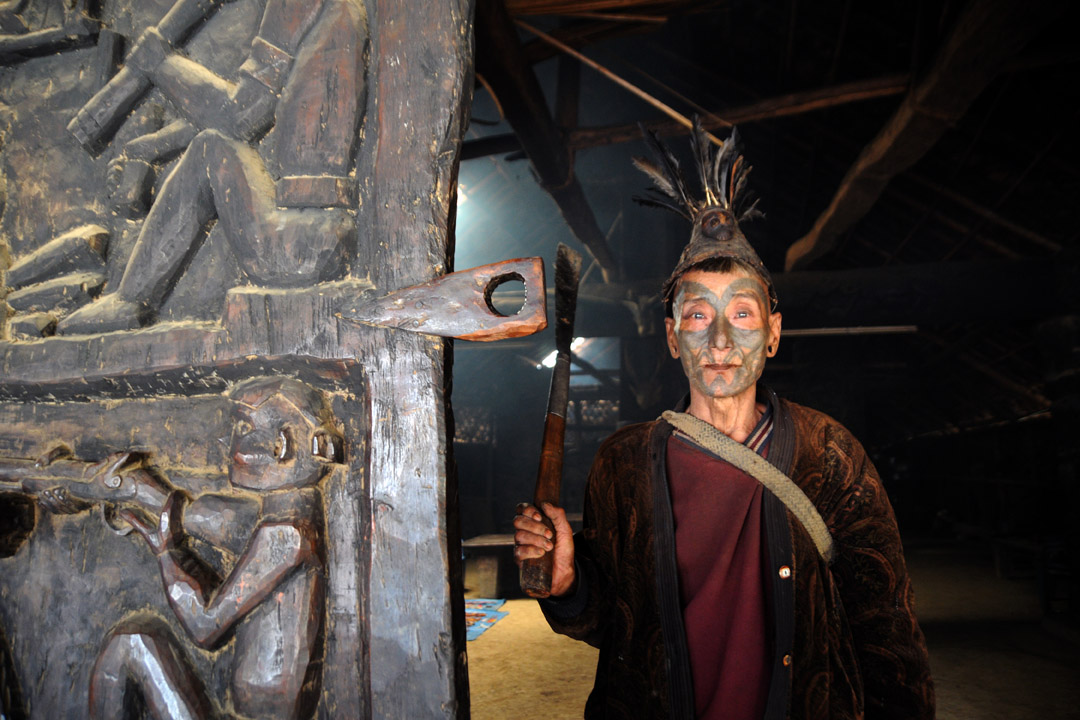By Sugato Mukherjee
The Konyak warrior tribe is one of the many Naga tribes. But what sets them apart from the rest of the tribes of this northeastern Indian state is their fierce headhunting history, which was part of their strong warrior tradition. Territorial conflicts between rival tribes and villages were resolved through warfare and Konyaks were feared for their headhunting skills – they beheaded their enemies and brought back the severed heads as trophies in a specially designed basket that they carried to the battles. The heads were then proudly displayed on the walls and doorways of the warriors.
The Indian government put a ban on headhunting in 1960 but Konyaks say that the tradition continued for a few more years before limited aspects of modernity were accessible in these remote parts of Nagaland. The next generation of the Konyaks partially embraced a Baptist-based Christianity.
In the remote villages of Nagaland ‘s Mon district, which borders Myanmar, a motley band of elderly former warriors are still visible — their tattooed faces and torsos bear witness to mortal combat and the once customary headhunting. It was tradition to honor the men with tattoos on their faces and chest as a mark of their heroic deeds. The elaborate process was done only by the chieftain’s wife.
Now mostly in their 80s, these former warriors are distinguishable also by their large ear piercings made of animal horns and war hats made of hunted wild pigs’ horns, hornbill feathers, and wild bear or goat hair. They still carry the knives with which they killed.
Born into and inheriting a strong tribal identity, the present day Konyaks are as proud of their warrior tradition as previous generations were. The skills with a daw, or the long-handled headhunting knife, have been handed down through the generations. All the male members of the tribe possess homemade guns, fabricated in these remote villages. Thankfully, they no longer resolve their conflicts with these weapons; however, the Konyak festivals are often a throwback to their headhunting days, where war dances with guns and knives feature prominently and some of the enemy skulls buried deep in the forests are unearthed to be displayed – a reminder of a not-so-distant past.
In another decade or so, the last of the headhunting warriors will be gone; however, the Konyaks say that the tribe’s warrior past will live on through the oral tradition and festivals.
Sugato Mukherjee is a photographer and writer based in Calcutta and his works have appeared in The Globe and Mail, Al Jazeera, National Geographic Traveler, Harper Collins and Yale University Journal. His coffee table book on Ladakh has been published from Delhi in 2013. Some of his visuals and stories can be found at sugatomukherjee.zenfolio.com

Ang Loe Khong, 85, killed 13 members of an enemy tribe in the two battles he participated in before headhunting was banned in 1960.
No comments:
Post a Comment